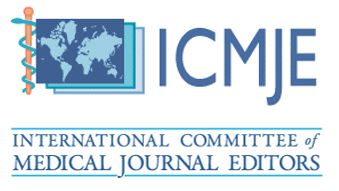Custom Cast Post and Core: The Key to Successful Endodontic Restoration of Anterior Teeth — Case Report
Arpit Sikri1*, Vaishali Kalra2, Jyotsana Sikri3 and Urvi Marwaha4
1 Associate Professor & Post Graduate Teacher, Department of Prosthodontics, Crown & Bridge and Oral Implantology, Bhojia Dental College & Hospital, Budh (Baddi), Teh. Baddi, Distt. Solan, Himachal Pradesh, India.
2 Postgraduate (PG) Student, Department of Prosthodontics, Crown & Bridge and Oral Implantology, Bhojia Dental College & Hospital, Budh (Baddi), Teh. Baddi, Distt. Solan, Himachal Pradesh, India.
3 Associate Professor & Post Graduate Teacher, Department of Conservative Dentistry & Endodontics, Bhojia Dental College & Hospital, Budh (Baddi), Teh. Baddi, Distt. Solan, Himachal Pradesh, India.
4 Consultant Prosthodontist (MDS), Chandigarh, India.
*Corresponding Author: Dr. Arpit Sikri, Associate Professor & Post Graduate Teacher, Department of Prosthodontics, Crown & Bridge and Oral Implantology, Bhojia Dental College & Hospital, Budh (Baddi), Teh. Baddi, Distt. Solan, Himachal Pradesh, India.
DOI: https://doi.org/10.58624/SVOADE.2024.05.0182
Received: May 25, 2024 Published: July 31, 2024
Abstract
Selecting the right post system and material to repair fractured teeth that have undergone endodontic treatment is a significant challenge for dental surgeons. Typically, cast metal posts and cores are used when there's extensive loss of tooth structure, especially if the plan involves metal-ceramic crowns. It's crucial to restore teeth effectively after endodontic treatment, with the post helping to retain the core needed to support the final prosthesis. When there's considerable loss of tooth structure or not enough ferrule left, it's recommended to use custom cast post and core systems. These systems not only help retain the core but also improve fracture resistance after root canal therapy. Often, an interdisciplinary approach is needed, considering both prosthetic and endodontic treatments, while meeting the patient's expectations and clinical needs. Using custom cast posts along with full veneer crowns has been successful in repairing severely damaged teeth, both functionally and aesthetically. These treatments strengthen weakened, endodontically treated teeth against the forces in the mouth, channeling torquing forces through the root dentin to supportive tissue along the roots. This approach ensures positive outcomes and patient satisfaction, especially in cases involving injured upper front (anterior) teeth. When anterior teeth are weakened or lost due to factors like decay, endodontic treatment, or trauma, extracoronal restoration becomes necessary. Custom cast post and core systems offer retention for core restorations, replacing lost coronal structure. This method has proven effective in restoring badly damaged anterior teeth, followed by porcelain-fused-to-metal restorations. Trauma-induced fractures in permanent anterior teeth are common, causing discomfort and aesthetic concerns for patients. Managing such cases endodontically may require post and core systems to reinforce coronal restorations. Despite the availability of various post systems, custom cast post and core remains a popular choice. The current case report discusses how dealing with severely damaged maxillary anterior teeth often requires using custom cast post and core systems followed by full coverage crowns. This approach effectively addresses both functional and aesthetic concerns.
Keywords: Aesthetics, Anterior teeth, Cast metal post and core, Cast post and core, Custom cast post, Custom cast post and core, Endodontic, Esthetic restoration, Esthetics, Ferrule, Fiber post and core, Fractured tooth, Metal ceramic crowns, Porcelain fused to metal crowns, Post endodontic restoration, Prosthetic rehabilitation.
Citation: Sikri A, Kalra V, Sikri J, Marwaha U. Custom Cast Post and Core: The Key to Successful Endodontic Restoration of Anterior Teeth — Case Report. SVOA Dentistry 2024, 5:4, 126-140. doi. 10.58624/SVOADE.2024.05.0182











